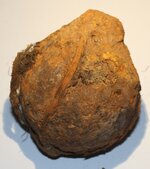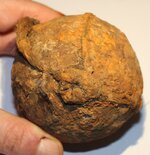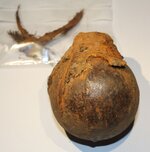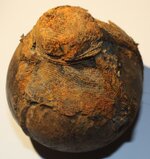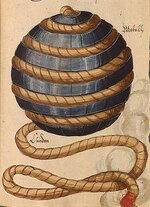Tom_Restorer
Gold Member
- Oct 5, 2009
- 9,773
- 48,696
- Primary Interest:
- Other
Hi Folks,
I thought to open this thread and show the process step by step because it is in my opinion a rare complete find in nearly perfect condition.
The piece has all original ropes, resin or bitumen on it and the fuse is covert with canvas.
A question to the specialists here: Was this canvas cover to protect the fuse or was it put on to avoid that only the wood fuse blows out when it goes off?
The ropes at the bottom are simply formed as a loop and this loop was fixed there with a kind of resin or bitumen (Tar), wich is also to find on some spots of the canvas and under the ropes.
Lets begin with the pics in original condition. The second pic shows the bottom with the loop and the black resin on some spots
I thought to open this thread and show the process step by step because it is in my opinion a rare complete find in nearly perfect condition.
The piece has all original ropes, resin or bitumen on it and the fuse is covert with canvas.
A question to the specialists here: Was this canvas cover to protect the fuse or was it put on to avoid that only the wood fuse blows out when it goes off?
The ropes at the bottom are simply formed as a loop and this loop was fixed there with a kind of resin or bitumen (Tar), wich is also to find on some spots of the canvas and under the ropes.
Lets begin with the pics in original condition. The second pic shows the bottom with the loop and the black resin on some spots
Attachments
Last edited by a moderator:


